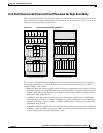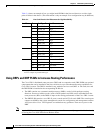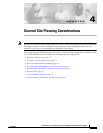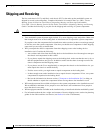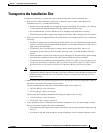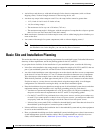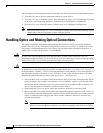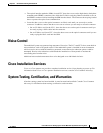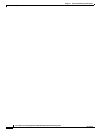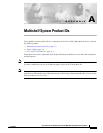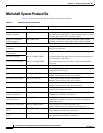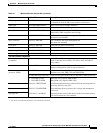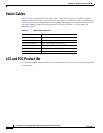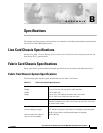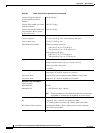
4-7
Cisco CRS-1 Carrier Routing System 16-Slot Multishelf System Site Planning Guide
OL-7422-04
Chapter 4 General Site Planning Considerations
Noise Control
• The optical interface modules (OIMs) in each FCC have dust covers on the high-density backplane
mounted trunk (HBMT) connectors into which the S2 fabric cards plug. Remove the dust covers on
the HBMT connectors before installing the OIM into the chassis. The connectors have spring-loaded
doors to protect the optics from contamination.
• Leave the dust covers on the optical connectors on fabric cards until you are ready to use the
connector. In addition, remove the dust covers one at a time as you are ready to use each connector.
–
On an S13 fabric card (in the LCC), leave the dust covers on the optical connectors until you
are ready to plug a fabric cable into the connector.
–
On an S2 fabric card (in an FCC), leave the dust covers on the optical connectors until you are
ready to plug the fabric card into the OIM.
Noise Control
The multishelf system can generate large amounts of fan noise. The LCCs and FCCs have some built-in
noise reduction, such as fan speed control. If the multishelf system is installed in an environment in
which excessive noise could be harmful to personnel, some other noise reduction options could be
attempted. Passive noise reduction could include the installation of foam panels to insulate the
surrounding area from the noise.
Additional noise reduction measures have to be designed on an individual site basis.
Cisco Installation Services
Cisco or a Cisco partner can provide a complete installation service, from planning to power up. For
information about Cisco or Cisco partner installation services, consult Cisco Customer Advocacy.
System Testing, Certification, and Warranties
After the routing system has been installed, it must be tested and certified. Consult Cisco Customer
Advocacy for information about testing, certification, and warranties.



